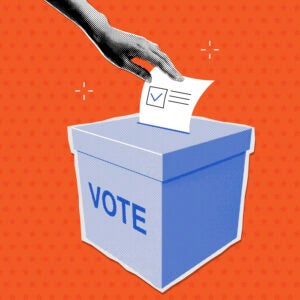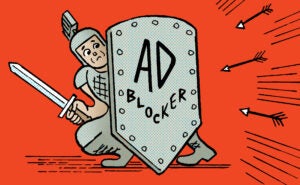 “Data-Driven Thinking” is written by members of the media community and contains fresh ideas on the digital revolution in media.
“Data-Driven Thinking” is written by members of the media community and contains fresh ideas on the digital revolution in media.
Today’s column is by Dave Hanley, principal at Deloitte Digital.
When businesses think about personalized marketing, they dream of true one-to-one marketing – where unique messages and content are delivered to specific customers at the right time, on the right platform, in the right sequence and with the right context.
For years this vision has been on the cusp of hitting the mainstream. But until recently, very few businesses could do it on a significant scale.
Now, the dream is finally becoming a reality. Thanks to the emergence of digital marketing platforms and personalization engines, more businesses are reaping the benefits of true one-to-one marketing. However, just because personalized marketing works for some businesses doesn’t mean it’s right for yours.
Implementing personalization can be difficult, time-consuming and expensive, likely requiring additional analytics and insight-related capabilities. It may even involve adopting, developing, managing, implementing and optimizing completely new creative and staffing models. For many businesses, the heavy investment required will outweigh the potential returns.
The good news is that personalized marketing is a continuum, not an all-or-nothing proposition, so you’re free to choose whichever level of personalization is right for your business.
The personalization continuum stretches from marketing to a single mass audience, to marketing to an audience of one. I see five distinct points within the personalization spectrum.
Broad Marketing
This is basic mass marketing. Although there can be some level of targeting to select the overall audience for an ad, such as ads shown during football games to reach football fans, the ads treat the entire audience as a homogeneous group, delivering standard content and messaging with no personalization.
The benefit is the ability to reach a broad audience and connect a brand to the content.
It requires the cost to reach a broad audience, which may include many people who have no interest in what is being sold.
Segmentation
For standard marketing segmentation, a broad audience is divided into subgroups with common characteristics and needs, such as active moms or NASCAR dads. Then, unique marketing strategies are used to target each group using the same channels. This is more tailored than broad marketing – and requires more advanced capabilities – but it’s still a form of mass marketing with no personalization.
The benefit is marketing spend that’s more focused on the likely buying audience.
It requires differentiated creative assets tailored to the needs of each segment and additional channels to reach each segment.
Microsegmentation
This is where things get more personalized. Microsegments are smaller than traditional segments, enabling more customization. This segmentation is based on behavior and attributes that are discovered through customer data and data from third parties. With microsegmentation, marketers have more segments and are able to send customers more unique messages based on more finely granulated segmentation data. This data can also optimize the power of digital marketing platforms to match creative content to specific microsegments.
The benefits are more efficient use of media spend, higher conversion of those attracted and a more personalized customer experience.
It requires implementation of a digital marketing platform or other system that can use customer and third-party data to make media purchase decisions and develop a strategy for maximizing the impact of media spend.
Targeted Microsegments
This is where things cross over into true personalization. Instead of using a digital marketing platform to target microsegments with selected ads, marketers can use a personalization engine to offer each microsegment a tailored customer journey, along with customized content. This involves shaping the entire customer experience, including the advertising, web experience, app interaction or campaign response, from individual clicks and visits to subsequent interactions over its life cycle. Certain content becomes customized, such as dynamic email and landing pages, but other content remains standardized.
The benefits are more efficient and effective use of media and personalized experiences across channels.
It requires implementation of a digital marketing platform and a personalization platform that enables marketers to attract and retain the right customers and optimize their customer journey.
One-To-One Marketing
This is the ultimate dream for businesses. Through the use of digital marketing platforms and personalization platforms, all marketing activities and content are tailored and targeted to fit the needs of individual consumers.
The benefit is the ultimate personalized and optimized experience.
It requires a digital marketing platform, personalization platform or fully modular content across all key channels.
How Much Personalization Is The Right Amount?
The level of personalization that is right for your business can fall anywhere on the continuum depending on your unique needs and existing capabilities. The five points highlighted above are merely guideposts. Businesses should consider three issues to determine where on the continuum they should be.
In terms of specific benefits, what will a business gain by moving to a different point on the personalization continuum? A given level of personalization can produce different results for different businesses. What may work for one business may not work for another.
There are specific costs and ROI to consider. What are the business’ current personalization capabilities, how do they compare to what’s required at the new point and what will it take to close the gap, in terms of money, time and effort? When can the business expect a positive ROI?
Since every business has a unique starting point, the time and investment required will vary.
Finally, what are the potential barriers? What tools and integration are required to be successful? What internal expertise and resources are needed, and what help can a business get from the outside? Businesses in highly regulated industries may have a harder time serving personalized content since all information must be reviewed and formally approved. Such barriers are usually surmountable but must be considered.
Get Started
Personalized marketing is not an all-or-nothing proposition – even small moves up the continuum can deliver huge benefits. However, going too far can be a waste of time, money and resources. The trick is to find the level of personalization that is right for a specific business.
The dream of true one-to-one personalization has finally become a reality. Now it’s time to pick a point on the continuum and get started.
Follow Dave Hanley (@davehanley), Deloitte Digital (@Deloittedigi_US) and AdExchanger (@adexchanger) on Twitter.











